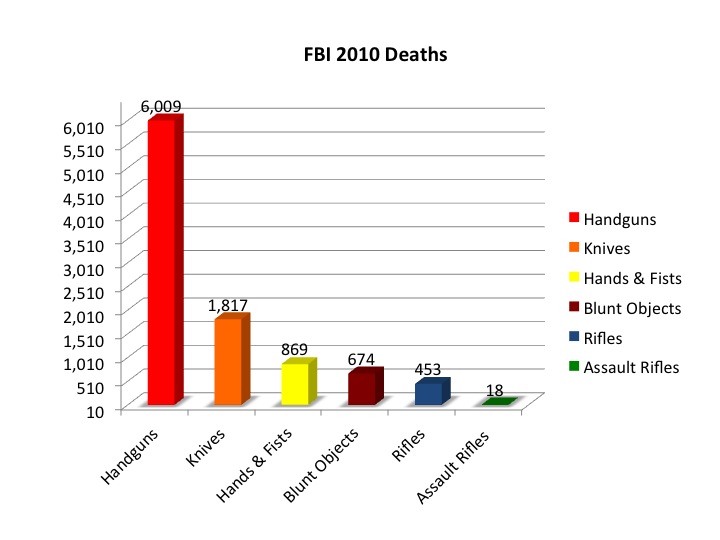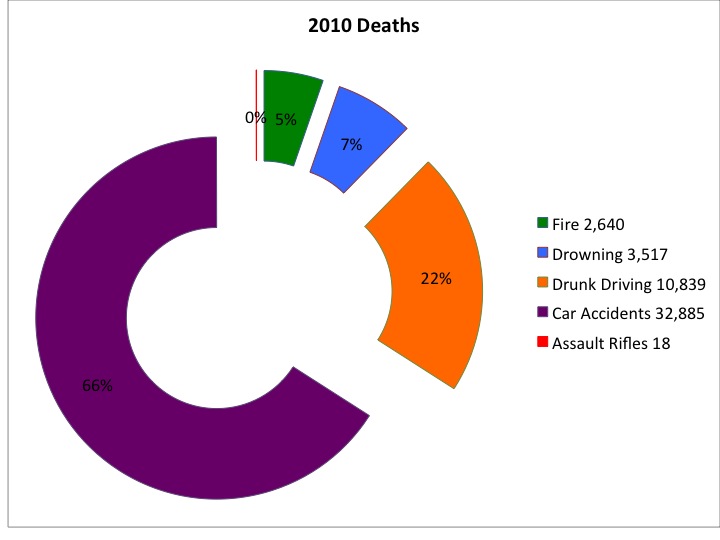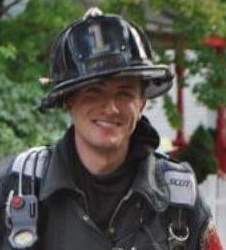By Frank Ricci, Gary Cole, and Justin McCarthy
The murders of two firefighters in New York and 26 individuals at the Sandy Hook Elementary school have stirred the nation. Perpetrated by two lone gunmen using what have been described as an “assault rifles,” these events are incomprehensible. It is hard to reconcile the pure evil of those two days and the overwhelming outpouring of human kindness in support of the victim’s families.
In the aftermath of these tragedies we also witness misplaced blame and knee-jerk reactions. We mustn’t be quick to act out of passion and place blame on such things as the type of weapon used, the magazine in it, or the number of bullets it holds. We must look at what was at the heart of these incidents: two mentally ill individuals. As a nation, we need to have an honest conversation to what changes could really make a difference. The victims deserve better than falling into the political trap of window dressing over substance.
Our founding fathers understood a need to deliberate and believed legislation should take time, otherwise truth could being the first casualty in the war of change. Thomas Jefferson once asked George Washington why two legislative bodies were needed. Washington stated he feared that one body (the House) could fall victim to the passion of the people, boiling over like a kettle of tea. Washington explained that adding the Senate would serve as a more deliberative and temperate body, and its purpose would be to cool legislation.
What is an Assault Rifle?
A true assault weapon is an automatic weapon, which, when you depress and hold the trigger, will continue to fire. The weapons that certain elected leaders are attempting to ban are semi-automatic weapons, which will only fire once when the trigger is depressed; these weapons operate in the same exact manner as most handguns.
What these leaders want to do is ban weapons based on their appearance, not their functionality. One of the oldest political tricks is to rename a bill to change the meaning of its real purpose. The political ideologues have won the day, and for the purposes of this article assault weapons will refer to the semi-automatic, military-style arms that Congress and state governments are attempting to ban.
Risk
As firefighters, we all understand that injury and death can easily be a card dealt to us. It is our mission to minimize risks and hazards by constant training, continued education, scientific studies, and reading trade publications such as Fire Engineering. We all understand our vocation will never be safe; we mustn’t change our mission based on pure emotion, and never change who we are. As Americans, we face exposure to risks every day. It is critical not to change who we are as a nation based off irrational fears.
Americans have a short historical memory. Few have heard of the Bath School Disaster, which was perpetrated by Andrew Kehoe on May 18, 1927. That day, 38 elementary school children and six adults were murdered and additional 58 injured at the Consolidated School in Bath Township, Michigan. He murdered his wife, burned down his farmhouse, and detonated a bomb in the school before committing suicide. This is the deadliest mass murder in a school in United States history and firearms weren’t involved. If an evil, determined individual wants to cause harm, evil will always find a way, regardless of the weapon. Proposed legislation only risk limiting the rights of law-abiding citizens.
Risk Posed by Assault Weapons
If you have been following the rhetoric,you will see that facts have been absent from the debate. Analyzing risk factors for fatalities provides context for risk in America. Fatal dog attacks accounted for more deaths in 2010 than assault weapons, yet there has been no call to ban dogs. Below are two charts we created based off statistics from 2010 compiled by the Federal Bureau of Investigation (FBI) and the Centers for Disease Control and Prevention (Figure 1). These deaths represent homicides and are broken down to weapons used. What you’ll find is that more people have been killed by fist fights than by assault weapons.

Figure 2 represents accidental deaths. Even when compared to accidental deaths, it is quite apparent that there is a greater risk of death from swimming in a pool or being in a car accident then being killed by an assault weapon.

In Peace, Fireman; If Invaded, Soldiers
Dating back to 1736, firefighters have answered the alarm, be it from the threat of fire or threat of invaders. Firefighters were required to supply buckets and arms, at their own expense. Our history is steeped in tradition and patriotism.
We have a storied past as patriots. Most of our founders–such as Paul Revere, George Washington, John Jay, Samuel Adams, John Hancock, Thomas Jefferson, Alexander Hamilton, and the father of our modern day fire service, Benjamin Franklin–all answered the call to protect their communities from fire.
Beginning in 1792 , when an elected leader, police officer, soldier or firefighter would be commissioned, they would take an oath, as we still do today, to protect and defend our Constitution. This is a solemn responsibility that requires an understanding of our history and founding documents.
Founding Documents and the Second Amendment
The Second Amendment provides for “A well regulated militia, being necessary to the security of a free state, the right of the people to keep and bear arms, shall not be infringed.”
Some would like to believe that the Second Amendment is written in a vacuum with no historical context. They hang on the word “militia,” believing that only the National Guard should have arms. They not only fail to comprehend the document, but also fail to comprehend the legislative intent.
New Haven mayor and a framer of our Constitution, Roger Sherman,conceived the right to bear arms as a privilege of every citizen. He stated “this is one of his most essential rights, to bear arms, and to resist every attack upon his liberty or property, by whoever made.” James Madison drafted the Constitution to limit the power of government and guarantee individual liberties. He believed in the Declaration of Independence and that our rights come from our creator, not the government.
It is important to understand the historical context of having the people keep and bear arms. The goal was that every able-bodied boy and man could answer the alarm with arms. The towns and the colonies stored powder and cannons, but most arms were the property of the individual.
In reading the Constitution in its entirety, two things are apparent. First, when the founders are addressing individuals, they write about “rights.” Second when they address the state or federal government they write about “powers.”
The placement of the Second Amendment is also telling. Our Constitution was originally drafted in two parts. The first part created a system and structure of a representative democracy. The second part, known as the Bill of Rights, covers individual liberties. James Madison, the Father of the Constitution, was concerned that the liberties we won in the Revolution and derived from God could fall prey to the government. He drafted the first 10 amendments, including the rights of freedom of religion, expression, press, the right to be judged by a jury, and the right to bear arms.
Furthermore, 75 years after the drafting of the Constitution, the 14th Amendment, known as the Equal Protection Clause, codified the 2nd Amendment. The Equal Protection Clause realized the promise of the Declaration of Independence and the sacrifice of the Civil War. The amendment simply means that the law of the land would be applied to all Americans. The legislative history indicates a key component of the clause was to protect the rights of freed slaves to bear arms. A man armed is no one’s slave.
Americans often forget we are a young nation. How many among us thought we would see the fall of the Soviet Union, or that insurgencies with primitive weapons compared to that of conventional army’s would be able to fend off superior forces? While we believe America will always find a way to prosper, we must keep in mind that the free American spirit is engrained in our history and founding.
The Second Amendment has nothing to do with hunting. It is in place to protect us from harm, be it foreign or domestic. The AR15 is equated to the musket of the 1700s, where the alternative to the musket was a bow, stone, or sword.
The Supreme Court
In 2008, the high court held in Heller v. District of Columbia that “self-defense is a basic right” and that individual self-defense is “the central component” of the Second Amendment in federal enclaves. Then, in 2010 in McDonald v. Chicago, the Court ruled that the Second Amendment applies to all the states.
The court understood the fundamental and natural right for self-defense. Police could be minutes away when seconds could make the difference between life and death. The FBI reports that in 2009 there were 414 justifiable homicides; in 2010, there were 387.
According to The U.S. Bureau of Justice, only 13 percent of burglaries occur when the occupant is home, compared to 59 percent in Britain, where firearms are strictly controlled. You can glean from this data that, in America, a burglar is more likely to meet an armed homeowner. This is why public registries of gun permit holders have unintended consequences, leading to higher gun thefts and allowing predators to pick targets that are most likely not to be armed. Connecticut exempts gun permits from the state’s Public Information Act. This exemption serves as a valuable deterrent.
Enforcement
We often talk about the symptoms, not the problems; this nation has an enforcement problem. According to the Office of Legislative Research, in Connecticut, from the year 2001-2007, there were 26,725 people arrested for current gun law violations; of those, 71 percent were not prosecuted. On a national level, gun law prosecutions are currently down 40 percent under Obama compared to the Bush administration. How can you possibly create new laws if you’re not willing to prosecute the ones that are currently on the books?
A New York Times study of the murders in that city from 2003-05 found that more than 90 percent of the killers had prior criminal records. In 1989, they also reported that in Washington, D.C., almost all the murderers had prior criminal records. The data from cities around the nation all show a common theme, this being the majority of homicides are committed by perpetrators with prior criminal records.
Minimizing the Risk with Real Solutions
All firefighters would agree that a day without responding to a shooting would be a blessing. We must have honest conversations on how we can minimize deaths across the country. This conversation must be respectful on both sides. Remember, most people on the other side of the issues do not have a hidden agenda and have pure intentions. However, as Americans, we cannot allow our rights trampled with laws that are ineffective and, as stated earlier, only affect law-abiding citizens. As with most problems, the answer is multifaceted. By using proven methods and some common sense, we can make a difference. The list below is to start an honest conversation to stir debate.
1. Stiffer penalties and longer sentences will help to minimize the number of homicides each year.
2. Cities and towns should ensure educational opportunities and after-school programs, which can make a difference in crime prevention.
3. Parents need to take responsibility for their kids and be a positive part of their lives.
4. Tax credit for gun safes should be used to protect against theft.
5. There should be a background check for all firearms with no national registry. It is important to understand that some elected leaders mean to prevent private sales of firearms–some even mean to limit the ability of a parent to will or give a gift as a gun. A better approach would be to expand the current background check system in a more comprehensive and thorough manner.
6. Training and mandatory reporting requirements for health care professionals in the case of an individual who indicates that he is going to harm others. Some states have limited requirements, however most care providers lack training dealing with this issue.
7. A police resource officer in schools. This builds relationships with kids and provides information to curb violence and drug abuse.
8. Exempt lists of gun owners addresses from state Freedom of Information Acts.
**
By no means are we minimizing the problem of gun violence in this nation. Cities such as Chicago, St. Louis, New Haven, Baltimore, and Camden all have been havens of gun violence. Sadly, the tragic experiences in these cities surpass the horrors of Newtown each year, and some each month. As first responders, we have all been witness to a lion’s share of tragedies, and no single event was less tragic than the other. If you asked a doctor who has performed an autopsy, he would surely agree one person has never been any deader than the other. Dead is dead no matter the tool used.
We as Americans must demand meaningful change to minimize the risk of even one more tragedy. This is the time for action, but as the great nation we are, it has to be done with substantial process, debate, and deliberation. So we ask that you call and write your elected leaders to protect our rights that have been given to us through the blood of great patriots. We must participate and understand that the price of our great democracy is vigilance.
Lt. Frank Ricci will appear in the PBS four-part series on the U.S. Constitution, airing in May 2013. He is a contributing editor of Fire Engineering and a Co-host of the radio show “Politics & Tactics”. He has lectured at the Reagan Library on Civil Rights and the U.S. Constitution. Lt. Ricci is a contributing author to the Firefighters Handbook I & II (PennWell 2008.) He is a FDIC instructor and lecturer and has won a landmark case before the US Supreme Court. Frank has testified before Congress and has been a lead consultant for Yale on several studies. Frank works in New Haven, Connecticut, and has worked on a heavy rescue unit covering Bethesda and Chevy Chase and was a “student live-in” at station 31 in Rockville, Maryland. Is the lead author of Fire Engineering’s Tactical Perspective Series: Command, Search, Ventilation, Fire Attack and Mayday.
 Lt. Gary Cole is a dedicated fire lieutenant with the New Have Fire Department with 20 years of progressively responsible experience in the emergency service area. He has been an outspoken advocate for school safety.
Lt. Gary Cole is a dedicated fire lieutenant with the New Have Fire Department with 20 years of progressively responsible experience in the emergency service area. He has been an outspoken advocate for school safety.
 Justin McCarthy is a five-year member of the New Haven (CT) Fire Department. He holds a bachelor’s degree in fire science from the University of New Haven. He currently teaches for the Wolcott and Middlesex Regional Fire Schools. Along with Frank Ricci, he co-wrote portions of the Tactical Perspectives DVD and Poster Series. Justin can be heard as the co-host of the PJ Norwood Show on Fire Engineering Talk Radio.
Justin McCarthy is a five-year member of the New Haven (CT) Fire Department. He holds a bachelor’s degree in fire science from the University of New Haven. He currently teaches for the Wolcott and Middlesex Regional Fire Schools. Along with Frank Ricci, he co-wrote portions of the Tactical Perspectives DVD and Poster Series. Justin can be heard as the co-host of the PJ Norwood Show on Fire Engineering Talk Radio.

